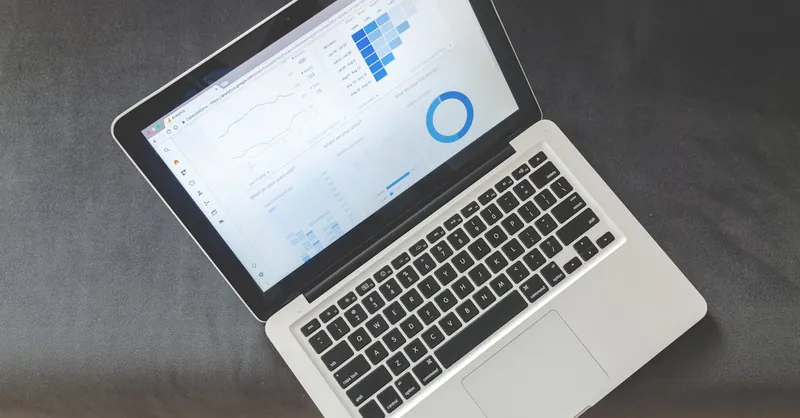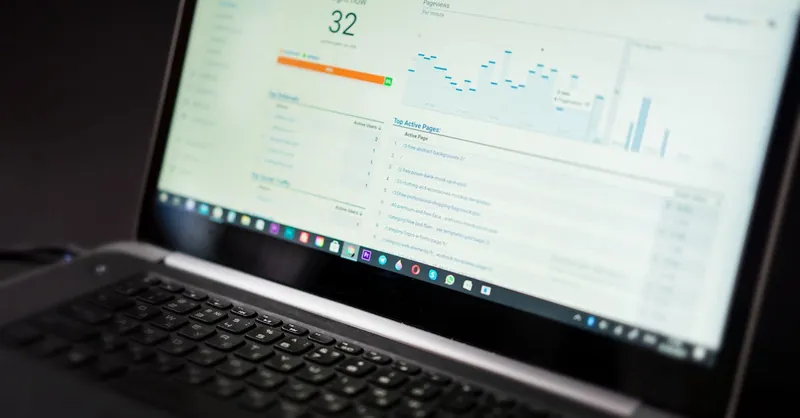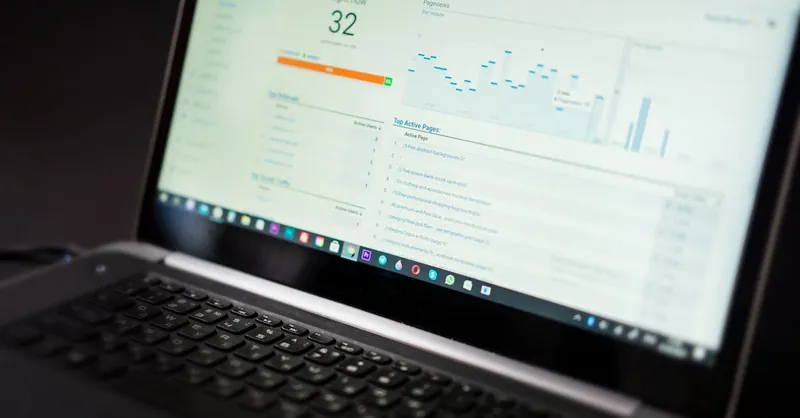Boost Productivity Through AI-Powered Analytics Today
Category: Productivity & Automation
Unlock Greater Efficiency with AI-Powered Analytics
In today's fast-paced digital landscape, professionals, entrepreneurs, and tech enthusiasts alike are constantly searching for innovative ways to boost productivity and optimize decision-making. If you've landed here, you're likely seeking actionable insights into how AI-powered analytics can transform your daily workflow, streamline complex processes, and help you gain a competitive edge. You’re probably familiar with the basics of AI and analytics but crave a deeper, practical understanding of how to leverage these tools effectively—without getting lost in jargon or vague promises.
This post cuts through the noise to reveal how AI-powered analytics are not just futuristic concepts but accessible solutions that deliver real value right now. You'll learn how to integrate AI analytics within your existing systems, the impact on team productivity, and how automation amplifies results. Whether you run a small business, lead a growing startup, or are a tech-savvy professional keen on maximizing your time and impact, this comprehensive guide is crafted with your expertise in mind—offering clear strategies, examples, and tools that stand out from generic advice. Read on to discover how to turn raw data into actionable insights that drive productivity like never before.
- Unlock Greater Efficiency with AI-Powered Analytics
- Understanding AI-Powered Analytics
- Key Components of AI Analytics Systems
- How AI Analytics Enhances Decision-Making
- Automating Routine Tasks with AI Insights
- Real-World Use Cases Across Industries: Case Studies Driving Productivity with AI-Powered Analytics
- Integrating AI Analytics into Your Workflow
- Measuring the Impact on Productivity: Metrics and KPIs to Track AI Analytics Effectiveness
- Overcoming Common Challenges and Ethical Considerations in AI-Powered Analytics
- Future Trends: What’s Next in AI Analytics for Productivity
Understanding AI-Powered Analytics
At its core, AI-powered analytics combines artificial intelligence technologies—such as machine learning, natural language processing, and predictive modeling—with traditional data analytics to uncover deeper insights, patterns, and trends from complex datasets. Unlike conventional analytics that rely heavily on human interpretation and static reports, AI-powered analytics automates data processing and delivers real-time, dynamic insights that continuously learn and improve over time.
This innovation is a true game-changer for productivity in modern workplaces because it enables organizations and individuals to:
- Make faster, data-driven decisions by automatically identifying critical metrics and anomalies without manual effort.
- Predict future outcomes and trends, empowering proactive strategies rather than reactive problem-solving.
- Streamline workflows by integrating AI insights directly into business applications and automation tools.
- Reduce human error and bias by relying on objective, algorithm-driven analysis.
- Personalize productivity strategies based on individual or team performance data analyzed at scale.
By transforming raw, overwhelming amounts of data into clear, actionable intelligence, AI-powered analytics not only accelerates decision-making but also unlocks new levels of efficiency and innovation—making it indispensable for anyone looking to boost productivity through smarter, AI-enabled solutions.

Image courtesy of Lukas
Key Components of AI Analytics Systems
To fully harness the power of AI-powered analytics, it’s essential to understand the technology stack that forms its backbone. These systems combine sophisticated components that work in harmony to process vast volumes of data, generate meaningful insights, and present them in intuitive formats. The main pillars of any robust AI analytics platform include:
1. Machine Learning Algorithms
At the heart of AI analytics lies machine learning (ML), which enables systems to learn from data patterns without explicit programming. ML models—such as classification, regression, clustering, and deep learning—extract actionable insights by identifying trends, predicting outcomes, and detecting anomalies. These algorithms continuously improve as more data flows in, ensuring your analytics remain accurate and relevant over time.
2. Data Processing Infrastructure
Raw data from diverse sources like CRM systems, social media, IoT devices, and enterprise databases needs to be cleansed, transformed, and organized before analysis. This is where data processing frameworks come into play, utilizing technologies like Apache Spark, Hadoop, or cloud-native tools to handle big data efficiently. Effective data ingestion, storage, and real-time streaming are critical to ensuring analytics deliver timely insights that boost productivity.
3. Visualization and Reporting Tools
Interpreting complex data and AI-generated insights quickly is vital for decision-makers. This is enabled by advanced visualization tools such as Tableau, Power BI, or custom dashboards that translate raw numbers into clear, interactive charts, heatmaps, and graphs. Enhanced visualization empowers users to grasp trends at a glance, monitor key performance indicators, and spot opportunities to optimize workflow and resource allocation.
By integrating these key components into a seamless AI analytics ecosystem, businesses and professionals gain the capability to move beyond static reports and toward dynamic, AI-driven decision support systems. This synergy accelerates productivity, amplifies automation benefits, and fosters a culture of data-informed innovation.

Image courtesy of Google DeepMind
How AI Analytics Enhances Decision-Making
One of the most transformative benefits of AI-powered analytics is its ability to elevate decision-making processes through predictive models and real-time insights. Instead of relying on historical data alone, AI-driven tools analyze past and present information to forecast future trends, enabling professionals to make smarter, faster decisions that directly boost productivity.
Predictive Models: Anticipating Outcomes Before They Happen
Predictive analytics leverage machine learning algorithms to identify patterns and relationships within data that are often invisible to the human eye. These models can:
- Forecast market trends and customer behavior, allowing businesses to pivot strategies proactively.
- Anticipate equipment failures or operational bottlenecks through anomaly detection, minimizing downtime and optimizing resource allocation.
- Score sales leads or project risks based on historical success factors, helping teams prioritize efforts where they’re most likely to yield results.
By integrating these predictions, professionals can shift from reactive problem-solving to proactive planning, reducing wasted time and increasing overall efficiency.
Real-Time Insights: Making Decisions with Up-to-the-Minute Data
In fast-moving environments, static reports quickly become outdated. AI analytics platforms address this by delivering real-time data processing and continuously updating insights as new information arrives. This dynamic feedback loop empowers decision-makers to:
- Monitor key performance indicators (KPIs) as events unfold, identifying opportunities or issues immediately.
- Adjust operational tactics instantly based on current conditions rather than waiting for end-of-day or weekly reports.
- Collaborate more effectively using shared, live dashboards that keep all stakeholders aligned.
The combination of predictive foresight with real-time visibility transforms decision-making from a cumbersome, time-consuming process into a streamlined, data-driven advantage. When decisions are made faster and with greater confidence, productivity naturally surges.
Incorporating AI analytics into your workflow means embracing a decision-making framework that is agile, informed, and highly responsive—qualities that are essential to staying competitive in today’s digital economy. As you continue to explore AI tools, prioritize those offering robust predictive capabilities alongside real-time analytics to truly maximize your efficiency gains.

Image courtesy of Atlantic Ambience
Automating Routine Tasks with AI Insights
One of the most powerful ways AI-powered analytics boost productivity is by automating routine, repetitive tasks that typically consume valuable time and attention. AI-driven analytics platforms continuously analyze workflow data to identify bottlenecks, redundant steps, and inefficiencies within business processes. By pinpointing exactly where delays occur or where manual intervention is unnecessary, these systems provide actionable insights that empower automation strategies.
How AI Analytics Identifies Bottlenecks
AI algorithms monitor performance metrics and process flows to detect patterns indicating workflow interruptions or slowdowns—such as excessive task handoffs, backlog accumulation, or resource mismatches. Through techniques like process mining and anomaly detection, AI highlights critical pain points that often go unnoticed in manual reviews. This visibility enables managers and teams to take targeted actions that immediately improve throughput and reduce cycle times.
Automating Repetitive Workflows with Intelligent Insights
Once bottlenecks and inefficiencies are identified, AI-powered analytics integrate with automation tools such as robotic process automation (RPA), intelligent workflow platforms, and AI assistants to:
- Delegate routine tasks automatically based on data-driven rules and priorities, freeing skilled professionals for higher-value work.
- Trigger workflows dynamically in response to real-time events or changing conditions detected by AI insights.
- Optimize task sequencing and resource allocation to minimize idle time and prevent process overlaps.
- Continuously learn and adapt automation logic as system data evolves, ensuring ongoing efficiency improvements without manual reprogramming.
By closing the loop between insights and action, AI-powered automation transforms data from passive information into a proactive force that streamlines day-to-day operations. This not only drives significant time savings but also enhances accuracy and consistency by reducing human errors in manual tasks.
Businesses and professionals embracing AI-driven task automation experience measurable productivity gains as repetitive workflows become faster, smarter, and largely self-managing—allowing teams to focus on innovation, strategy, and impactful outcomes.

Image courtesy of energepic.com
Real-World Use Cases Across Industries: Case Studies Driving Productivity with AI-Powered Analytics
AI-powered analytics is reshaping industries by enabling businesses to unlock unprecedented productivity gains through data-driven strategies tailored to their unique operational challenges. Let’s explore real-world examples illustrating how companies across various sectors leverage AI analytics to automate processes, optimize resource allocation, and enhance decision-making—ultimately driving measurable improvements in efficiency and output.
Marketing: Hyper-Personalization and Campaign Optimization
Leading marketing teams harness AI analytics to analyze customer behavior, segment audiences dynamically, and predict engagement patterns. By tapping into predictive insights, marketers can:
- Target campaigns with laser precision, increasing conversion rates while reducing wasted spend.
- Optimize content delivery timing and channel mix based on real-time response data.
- Automate campaign adjustments using AI-driven A/B testing results, ensuring maximum impact without manual intervention.
Brands using AI-powered marketing analytics report significant productivity boosts by streamlining campaign workflows and focusing efforts on high-ROI activities.
Supply Chain Management: Enhancing Forecast Accuracy and Operational Efficiency
In supply chain operations, AI analytics plays a pivotal role in demand forecasting, inventory optimization, and logistics routing. For example:
- Retailers utilize machine learning models to predict consumer demand fluctuations, minimizing stockouts and overstock scenarios.
- Manufacturers implement AI-driven anomaly detection to quickly identify production line inefficiencies or equipment failures, reducing downtime.
- Logistics providers apply route optimization algorithms that dynamically adjust deliveries based on traffic, weather, and real-time order changes.
These applications result in faster turnaround times, reduced operational waste, and smoother coordination across supply chain partners—translating directly into higher productivity and customer satisfaction.
Financial Services: Risk Management and Fraud Detection
Financial institutions employ AI analytics to enhance risk assessment and detect fraudulent transactions with greater speed and accuracy than traditional methods. Key productivity impacts include:
- Automating compliance monitoring, freeing analysts to focus on strategic tasks.
- Early identification of risky loans or investments through real-time credit scoring models.
- Rapid fraud detection through pattern recognition, reducing financial losses and investigative workload.
The integration of AI-powered analytics in financial processes accelerates workflows, minimizes manual reviews, and supports robust, data-driven decision frameworks.
Healthcare: Streamlining Patient Care and Operational Decisions
Healthcare providers apply AI analytics to improve patient outcomes and optimize hospital operations by:
- Predicting patient admission rates to better allocate staff and resources.
- Analyzing medical imaging and health records to assist clinical diagnoses.
- Monitoring supply usage and scheduling to reduce operational bottlenecks.
By automating data analysis and providing timely insights, AI empowers healthcare professionals to prioritize care effectively and reduce administrative burdens, enhancing overall productivity within complex care environments.
Across industries, these case studies underscore the transformative potential of AI-powered analytics to drive productivity improvements through smarter decision-making, predictive foresight, and intelligent automation. Implementing these solutions helps businesses stay agile, innovate rapidly, and maintain a competitive edge in an increasingly data-driven world.

Image courtesy of Artem Podrez
Integrating AI Analytics into Your Workflow
Successfully integrating AI-powered analytics into your existing workflow is a critical step toward unlocking its full productivity potential. This process involves careful selection of the right tools, seamless data integration, and thoughtful adoption strategies that align with your team's current structure and capabilities.
Selecting the Right AI Analytics Tools
Choosing an AI analytics platform tailored to your specific business needs ensures you maximize ROI and ease of adoption. Consider the following factors when evaluating tools:
- Compatibility with your data sources – Opt for solutions that support seamless integration with your CRM, ERP, databases, or cloud platforms.
- Scalability and flexibility – Select tools that can grow with your data volume and evolving analytic requirements.
- User-friendly interfaces and visualization capabilities – Prioritize platforms that facilitate easy interpretation of AI-generated insights by both technical and non-technical staff.
- Built-in automation features – Look for AI analytics solutions offering workflow automation and real-time alerting.
Streamlining Data Integration
AI analytics thrives on high-quality, diverse datasets. Efficient data integration involves:
- Centralizing data from disparate sources into a unified repository like a data warehouse or lake.
- Ensuring data cleaning and normalization for consistency and accuracy.
- Leveraging APIs and connectors provided by AI platforms to automate ongoing data syncs.
This structured approach reduces manual data handling and accelerates insight generation, enabling teams to act on reliable, up-to-date information.
Adopting AI Analytics within Existing Team Structures
To embed AI analytics within your organization, it’s crucial to align the technology implementation with your team’s workflows and culture. Best practices include:
- Providing training and resources to help team members understand how AI insights complement their roles.
- Assigning ownership of analytics processes to key stakeholders who can champion adoption and translate insights into actionable plans.
- Encouraging collaboration across departments by sharing dashboards and reports that foster data-driven conversations.
- Iteratively refining workflows based on user feedback and analytics performance metrics.
By delivering a clear integration roadmap and fostering a culture that values data-driven decision-making, you enable your team to unlock the productivity gains promised by AI-powered analytics without disrupting existing operations. This strategic, step-by-step incorporation is key to transforming analytics from a standalone tool into an indispensable asset within your daily workflow.

Image courtesy of Mikael Blomkvist
Measuring the Impact on Productivity: Metrics and KPIs to Track AI Analytics Effectiveness
To ensure your AI-powered analytics initiatives truly boost productivity, it’s essential to establish clear, quantifiable metrics and Key Performance Indicators (KPIs) that monitor their ongoing effectiveness. Measuring the impact allows your team to gauge return on investment (ROI), identify areas for improvement, and optimize AI strategies over time—turning analytics from a one-time project into a continuous productivity enhancer.
Critical Metrics to Track AI Analytics Impact
-
Decision-Making Speed: Track reductions in the time taken to make informed decisions before and after implementing AI analytics. Faster decision cycles often correlate with higher productivity and more agile responses to market changes.
-
Operational Efficiency: Measure improvements in process cycle times, throughput rates, and error reductions. AI insights should lead to streamlined workflows and fewer bottlenecks, which directly impact productivity levels.
-
Automation Rate: Monitor the percentage of tasks or workflows automated based on AI analytics recommendations. Increased automation frees up human resources, allowing teams to focus on strategic initiatives that add more value.
-
User Adoption and Engagement: Evaluate how frequently team members access AI dashboards, generate reports, or trigger analytics-driven workflows. High adoption rates indicate the platform’s practicality and influence on daily operations.
-
Quality of Output: Assess improvements in outcome quality—such as enhanced customer satisfaction scores, increased sales conversion rates, or reduced operational errors—that result from applying AI-driven insights.
Best KPIs for AI Analytics Optimization
- Accuracy of Predictive Models: Regularly validate and track the precision of AI forecasts to maintain confidence in analytics-supported decisions.
- Insight Actionability: Quantify the percentage of AI-generated insights that lead to tangible action or changes, ensuring analytics translate into meaningful productivity gains.
- Cost Savings: Calculate reductions in labor, operational, or technology costs attributed to AI-powered enhancements.
- Cycle Time Reduction: Measure decreases in the time required to complete key processes enabled by AI insights.
By continuously monitoring these metrics and KPIs, organizations can implement a feedback loop to refine AI algorithms, enhance data quality, and adjust automation rules—maximizing the productivity benefits from AI analytics initiatives in the long term. Establishing a structured measurement framework empowers teams to justify AI investments with data-backed results and fosters a culture of continual performance improvement.

Image courtesy of Atlantic Ambience
Overcoming Common Challenges and Ethical Considerations in AI-Powered Analytics
While AI-powered analytics offers transformative productivity benefits, organizations must also navigate several critical challenges and ethical considerations to ensure responsible and sustainable adoption. Addressing concerns surrounding data privacy, algorithmic bias, and change management is essential not only to maintain trust but also to unlock the full potential of AI insights without unintended negative consequences.
Safeguarding Data Privacy and Security
One of the foremost priorities when implementing AI analytics is protecting sensitive information. AI systems inherently rely on vast datasets—often containing personal, financial, or proprietary data—that require careful handling to comply with regulations such as GDPR, CCPA, or industry-specific standards. To uphold data privacy while leveraging AI analytics, organizations should:
- Implement robust data governance frameworks that define who accesses data, how it is stored, and under what conditions it can be used.
- Employ encryption, anonymization, and tokenization techniques to minimize the risk of data breaches or unauthorized identification.
- Adopt transparent data usage policies and clearly communicate how AI-driven insights are generated and applied.
- Regularly audit AI systems and data pipelines to ensure compliance with evolving privacy laws and ethical guidelines.
Prioritizing data privacy builds confidence among stakeholders and customers, enabling more effective data sharing and integration crucial for high-quality AI analytics.
Mitigating Bias for Fair and Accurate AI Insights
AI algorithms can inadvertently perpetuate or amplify existing biases present in training data, leading to skewed results and unfair decisions that compromise productivity and ethical standards. To reduce bias and promote fairness in AI-powered analytics:
- Conduct thorough data assessments to identify and address imbalances or underrepresented groups before model training.
- Use diverse and representative datasets to improve algorithmic generalization across different contexts and populations.
- Continuously monitor AI output through fairness metrics and human-in-the-loop evaluations to catch and correct biased patterns early.
- Foster interdisciplinary collaboration between data scientists, domain experts, and ethics specialists to design inclusive AI models.
By proactively mitigating bias, organizations not only enhance the accuracy and reliability of AI insights but also preserve their reputation and social responsibility commitments.
Managing Organizational Change for Smooth AI Adoption
Integrating AI-powered analytics fundamentally alters workflows, decision-making processes, and team roles, which can provoke resistance or uncertainty among employees. Effective change management is crucial to align human factors with technological innovation and to sustain productivity gains over time. Key strategies include:
- Engaging leadership to champion AI initiatives and articulate clear visions of how analytics improve work outcomes.
- Providing ongoing education and skill development so teams feel empowered rather than threatened by AI tools.
- Encouraging a culture of experimentation and learning where feedback loops help refine AI integrations based on user experiences.
- Setting realistic expectations around AI’s capabilities and limitations to prevent disillusionment or overreliance.
Thoughtful change management ensures that AI-powered analytics becomes not just a technical addition but an embedded asset driving collaborative, informed, and ethical productivity improvements.
By confronting challenges related to data privacy, bias mitigation, and organizational change, businesses and professionals can adopt AI analytics responsibly—unlocking its full power to accelerate decision-making, foster innovation, and amplify productivity while maintaining trust and ethical integrity.

Image courtesy of Markus Winkler
Future Trends: What’s Next in AI Analytics for Productivity
As AI-powered analytics continues to evolve, emerging technologies like augmented analytics and AI-driven automation are set to revolutionize how individuals and organizations boost productivity in the near future. These cutting-edge advancements promise to make AI analytics more intuitive, accessible, and deeply integrated into everyday workflows, accelerating data-driven decision-making and task execution to unprecedented levels.
Augmented Analytics: Democratizing Data Insights
One of the most exciting trends is augmented analytics, which leverages AI to automate data preparation, insight generation, and explanation. By combining natural language processing (NLP), machine learning, and smart visualization, augmented analytics platforms enable users—even those without deep technical expertise—to ask complex questions and receive immediate, actionable answers in natural language. This democratization of data insights will empower wider teams to harness AI-powered analytics effortlessly, fostering a culture of collaborative productivity where insights drive decisions across all roles and departments.
Key benefits of augmented analytics include:
- Automated data discovery and anomaly detection, highlighting critical productivity drivers without manual analysis.
- Conversational interfaces that allow stakeholders to interact with data through voice or text queries, eliminating barriers between users and complex datasets.
- Contextual explanations and recommendations that help teams understand why trends occur and what actionable steps to take next.
AI-Driven Automation: Intelligent Workflow Orchestration
Beyond analytics, the next wave of productivity gains will come from AI-driven automation that tightly integrates predictive insights with smart process execution. This means AI systems will not only identify inefficiencies or opportunities but will also autonomously initiate and adjust workflows, supplier interactions, resource deployments, or even creative tasks based on continuous learning from real-time data feeds.
Emerging capabilities in this realm include:
- Adaptive automation, where AI dynamically modifies task sequences and resource allocations to optimize productivity in fluid environments.
- Hyper-automation, combining robotic process automation (RPA), AI analytics, and machine learning into an end-to-end intelligent automation ecosystem.
- Personalized productivity assistants powered by AI that anticipate user needs, prioritize tasks, and seamlessly coordinate between applications.
Together, these advancements will reshape the productivity landscape by making AI-powered analytics a proactive partner rather than a passive tool—transforming insights into immediate, scalable actions that drive sustainable growth and competitive advantage.
Embracing these future trends in AI analytics ensures that your productivity strategy remains at the cutting edge, unlocking deeper value from data and automation while continually adapting to new challenges and opportunities in an ever-changing digital world.

Image courtesy of Hyundai Motor Group
